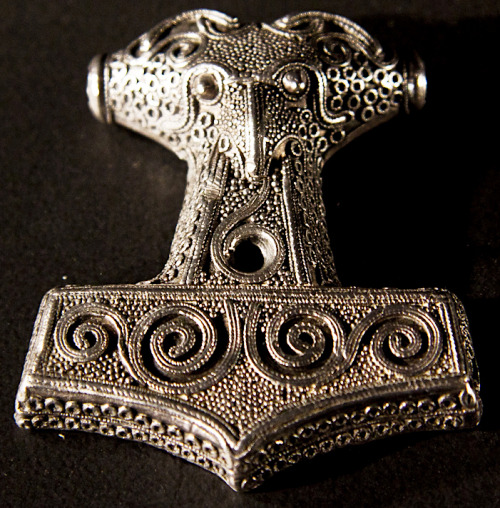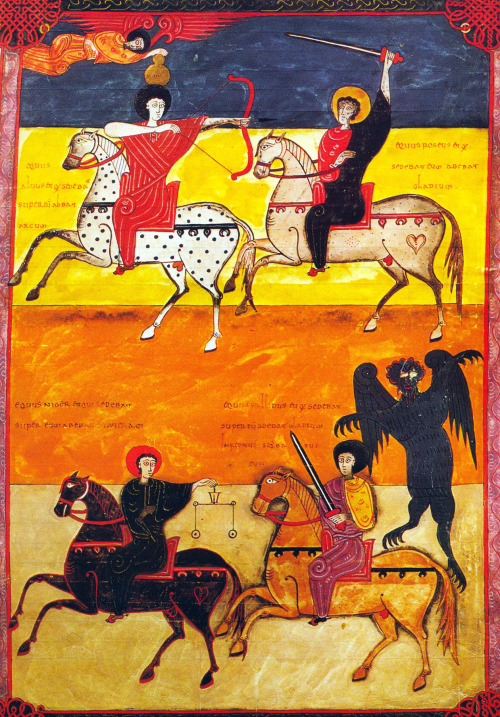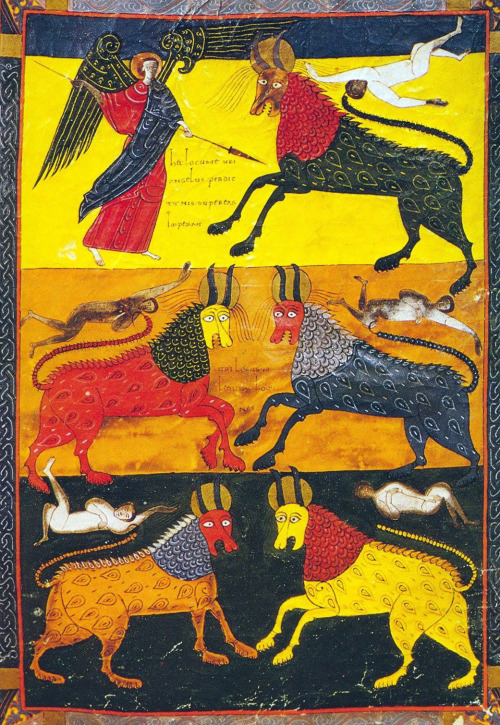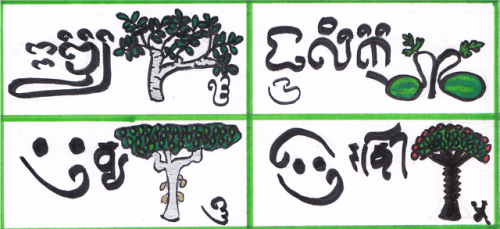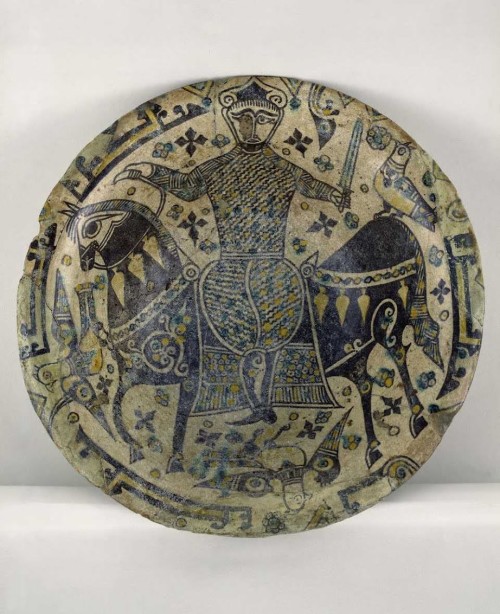#10th century
Mjölnir (Thor’s hammer). 10th century silver pendant, discovered in Købelev, on the Danish island of Lolland.
Post link
Kitab al-Ṭabīḫ/كتاب الطبيخ,
The Book of Dishes
Iraqi Arab cookbook written in the 10th century by Ibn Sayyar al-Warraq
(source: National Library of Finland)
Post link
Facundus
Illustrations from a version of the Commentary on the Apocalypse, or the Beatus, c. 1047.
Post link
Take me back to the Vikings and Valkyries Armidale is Australia’s biggest Dark Ages reenacment event, in which there is no general public and it was my first ever strictly Viking / Dark Ages event.
Post link
Russian Neo Classic Bronze Gueridon
An unusual Russin Neo-Classic style bronze Gueridon with an ormolu pierced bronze gallery, a transparent cobalt glass circular table top, with a patented bronze scrolling legs centered by an ormolu bronze acanthus and acorn stretcher. 20th century.
Post link
Parvati
Chola Period, 10th Century
#Gods #GodsOfIndia #FreeTheNipple #Historic #Heritage #BodyGoals #Sculpture #Bronze #BronzeSculpture #BronzeCasting #Female #TheFutureIsFemale #Hindu #Hinduism #HinduTraditions #Iconography #SalarJungMuseum #Museums #Hyderabad #HyderabadDiaries #HyderabadJournal #Telangana #India #Wanderer #Wanderlust #Travel #Travelogue #TravelDiaries (at The Salar Jung Museum, Hyderabad)
Post link
Walter Art Museum, MS W.2, Collection of works by Augustine, Didymus the Blind, and Quodvultdeus, fol. 1bisr.
Post link
This is one of the projects I’m working on! It’s a Tree Alphabet for 6 different scripts current in 800 AD. Or, at least, the first 4 characters from each of them.
Thanks so much to @ohrosesfor help with the Arabic plant choices. If anyone speaks Gaelic, Khmer, Hindi/Urdu/Sanskrit, any Maya dialect (especially Ch’orti or Ch’ol), or Japanese; and is willing to talk to me about plants, PLEASE message me!
First, third, fourth, and fifth rows are read from left to right. Second and sixth rows are read from right to left, and row six should be reoriented so it can also be read from top to bottom.
Row 1, Goídelc/Old Irish (There is almost NO depictions of plants in early medieval Irish art. I haven’t figured out how to depict the trees, even though this is the language that inspired the project!)
- A - Ailm/Pine
- B - Beith/Birch
- C - Coll/Hazel
- D - Dair/Oak
Row 2, Classical Arabic
- ا/Ā - ارز/Arz/Cedar
- ب/B - بلوط/Ballūṭ/Oak
- ج/J - جوز/Jawz/Walnut
- د/D - دردار/Dardār/Elm (Mispelled. Doh!)
Row 3, Angkorian Khmer
- អ/A - អន្គន/ʔAṅgañ/Box-Bean Vine
- អា/Ā - អាម្រតក/ʔĀmrātaka/Hog-Plum
- ឥ/I - ឥព្យ/Ibya/Frankincense
- ឳ/U - ឳលឹក/Ulik/Watermelon
Row 4, Sanskrit
- अ/A - अशोक/Aśoka/Ashoka Tree
- आ/Ā - आम्ल/Āmla/Tamarind
- इ/I - इब्य/Ibya/Frankincense
- ई/Ī - ईशानी/Īśānī/Kapok
Row 5, Chol’an/Classical Maya (I kind of made up the character order, based on one comment in an article prompted by the authour seeing some blocks that had paired glyphs lying on the ground.)
- La - Lah/Nettle្
- A - Aaj/Reed
- Li - (Still working on it)
- I - Is/Sweet Potato
Row 6, Niɸongo/Early Middle Japanese
- い/I - いちい/Ichī/Yew
- ろ/Ro - ろうばい/Roubai/Wintersweet
- は/ɸa - はぎ/Hagi/Bush Clover
- に/Ni - にれ/Nire/Elm
Post link
Dish with Rider, Samanid Empire, Nishapur, Iran, 9th or 10th century, Ceramic; Earthenware, underglaze painted, w60 x h22 cm, Pergamon museum, Berlin, Germany.
High-heeled shoes were first worn by Persian soldiers in the 10th century. This art piece is an early example of it.
a short article about the history of men in Heels can be found here.
Post link

